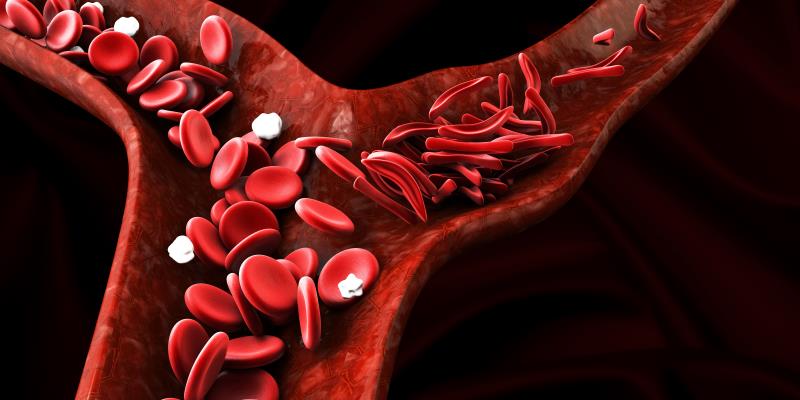Overall outlook for paediatric sickle cell disease improved with stem cell transplant





Allogeneic stem cell transplantation (allo-SCT) appears to confer lasting benefits to children with sickle cell anaemia and a history of abnormal cerebral velocities, with substantial improvements in quality of life (QoL) and cognitive outcomes 10 years later, according to the results of the DREPAGREFFE-2 trial.
Compared with patients who received standard of care (SoC; chronic transfusions and hydroxyurea), those who underwent allo-SCT had significantly better QoL scores related to physical (84.0 vs 76.4; p=0.013), school (72.6 vs 61.4; p=0.016), and social functioning (93.8 vs 86.4; p=0.003) at the 10-year follow-up. [ASH 2024, LBA-5]
Cognitive performance at 10 years was also better in the allo-SCT than in the SoC arm. The mean working memory index (WMI) score was 89.6 vs 80.5 (p=0.021), while the processing speed index (PSI) score was 96.5 vs 83.7 (p=0.035). Overall, the mean WMI and PSI scores improved numerically from baseline in the allo-SCT arm (5.8 and 9.0, respectively) but not in the SoC arm (–2.0 and 0.6, respectively).
“This trial demonstrated that following stem cell transplantation, patients had a better quality of life, not only for physical functioning but also for social and school functioning,” said lead study author Dr Françoise Bernaudin from the Hôpital Intercommunal de Créteil, Université Paris-Est, in Créteil, France.
“We found that these patients can have a greater ability to do sports and run, attained higher academic degrees, are not anxious about their future, and experience less anger and less difficulty with memory compared with those who received chronic transfusions and hydroxyurea,” Bernaudin added.
Reduced SCIs and vaso-occlusive crises
MRI and MRA data showed that 12 patients in the allo-SCT arm and six in the SoC arm had silent cerebral infarcts (SCIs) at baseline. After 10 years, SCIs occurred in five additional patients in the SoC arm as opposed to none in the allo-SCT arm. SCIs in four patients in the allo-SCT arm and one in the SoC arm were either no longer visible or <3 mm in size (p=0.010).
Allo-HCT was also more efficacious than SoC at reducing hospitalizations (0.2 vs 6.1; p<0.001), hospital stay (0.9 vs 30 days; p<0.001), and vaso-occlusive crises (0 vs 3.8; p<0.001).
Taken together, the findings confirm “the importance of complete suppression of sickle cell erythropoiesis by allogeneic transplantation,” Bernaudin said.
She emphasized that while the data can offer a degree of reassurance for patients, families, and physicians who are considering the procedure, it is essential to fully understand the potential risks associated with a stem cell transplant. Bernaudin cited infertility as a common side effect of the conditioning regimen used to clear the bone marrow in preparation for receiving a transplant.
However, fertility preservation procedures are available in France for all patients undergoing stem cell transplantation for SCD at no charge to the families, she continued. “With this technique, we hope that the patients will be able to have children after the transplantation.”
DREPAGREFFE-2
DREPAGREFFE-2 was a follow-up to DREPAGREFFE-1, a French multicentre, prospective trial said to be the first to evaluate allo-SCT against SoC for children with sickle cell anaemia. The analysis included 67 children (52.2 percent female), including seven with a history of stroke. Inclusion criteria were 5–15 years of age, a history of abnormal cerebral velocities, long-term chronic transfusion therapy, and at least one sibling without sickle cell disease.
Of the children, 32 had a matched sibling donor and underwent allo-SCT with a myeloablative conditioning regimen that comprised busulfan, cyclophosphamide, and rabbit antithymocyte globulin. The 35 children in the SoC arm had no matched donor and continued chronic transfusion therapy for at least 1 year but were switched to hydroxyurea in the absence of stenosis and in case of normalization of their cerebral arterial velocities.
Bernaudin noted that future research should prioritize comparative analyses of outcomes between haplo-identical stem cell transplantation and gene therapy, with additional work needed to further improve transplantation techniques to minimize the risk of complications or failure particularly after haplo-identical transplants in children.